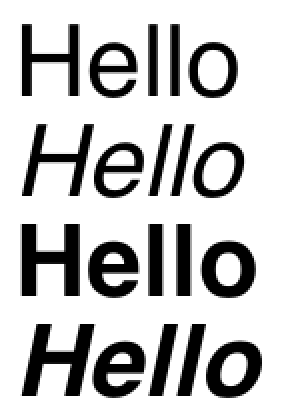

This is not that uncommon with some sans serif font families (although some of these obliqued styles are at least labeled as “oblique” as opposed to “italic”).

There is no question at all that artificial italics and embolding is at best poor practice and at worst “a crime against typography.”įirst, ironically, there are some font families that actually define their “italic” styles as simply obliqued versions of their standard style (i.e., each glyph definition is simply an obliqued version of the standard glyph definition). Always remember, even though you have the ability to do atrocious things in Microsoft Word, you should avoid the temptation and do it right.
#Microsoft yahei bold doesnt show professional
Make your type look professional and thoughtful by being a smart typographer. If it’s not there, and you really want italics, you need to switch to a different typeface. Just go to the Font menu and choose the associated italic font of the one you’re currently using. Instead, choose a real italic typeface to use for emphasis. But in some cases it will happily skew the roman version, with nasty results. True, for many typefaces, Word will automatically apply the proper italic fonts (if you have them installed). The best way to stay out of trouble is to avoid using the little I icon in Word.

Au to the contrary! (as they say in French). And the problem is that people do this all the time and they think it looks good. And Microsoft Word can destroy it all in a click of the mouse. A single typeface is the result of thousands of hours of work in the studio of a serious typographer. It is not a casual thing to design an italic typeface. More after the jump! Continue reading below↓įree and Premium members see fewer ads! Sign up and log-in today.


 0 kommentar(er)
0 kommentar(er)
